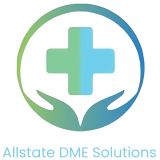
In today’s dynamic market, venturing into the healthcare industry to sell medical equipment can be a lucrative business opportunity. The demand for quality medical devices is continually rising, providing entrepreneurs with a chance to make a meaningful impact while generating profits. This article will guide you through the essential steps on how to start selling medical equipment successfully.
Importance of Selling Medical Equipment
The healthcare industry is a crucial sector that relies heavily on advanced medical equipment for diagnosis, treatment, and patient care. By entering this market, you contribute to the well-being of individuals while tapping into a financially rewarding venture.
Growing Opportunities in the Healthcare Market
With the constant evolution of medical technology and an aging global population, the demand for medical equipment is on the rise. Entrepreneurs can seize this opportunity to establish themselves in a thriving market.
Understanding the Medical Equipment Market
A. Overview of Medical Equipment
Before diving in, it’s essential to understand the diverse range of medical equipment available, from diagnostic tools to life-saving devices. Familiarizing yourself with the market will help you identify potential niches and gaps.
B. Market Trends and Demands
Stay updated on current market trends and demands to align your offerings with what healthcare professionals and facilities are seeking. This knowledge will be crucial in shaping your product selection.
Research and Planning
A. Identifying Target Audience
Determine the specific healthcare professionals and facilities you want to target. Tailoring your products to their needs increases the chances of successful sales.
B. Analyzing Competitors
Conduct thorough research on existing competitors. Analyze their strengths and weaknesses to identify opportunities for differentiation and improvement.
C. Regulatory Compliance
Ensure that you are aware of and compliant with all regulations governing the sale of medical equipment. This includes obtaining necessary licenses and adhering to quality standards.
Choosing the Right Products
A. Niche Selection
Consider specializing in a particular niche within the medical equipment market. This can help you establish a unique identity and cater to specific needs.
B. Quality and Reliability
Prioritize the quality and reliability of the products you choose to sell. Building a reputation for offering dependable medical equipment will contribute to long-term success.
C. Pricing Strategies
Develop competitive yet profitable pricing strategies. Consider factors such as production costs, market demand, and perceived value when determining your pricing.
Setting Up Your Business
A. Legal Requirements
Ensure that you comply with all legal requirements for starting a medical equipment business. This includes registering your business, obtaining necessary permits, and meeting industry standards.
B. Establishing an Online Presence
In today’s digital age, having a robust online presence is crucial. Create a user-friendly website that showcases your products and provides information about your business.
C. Creating a Brand Identity
Build a strong brand identity that reflects the values of your business. This includes designing a memorable logo, choosing a distinct color scheme, and crafting a compelling brand story.
Marketing Strategies
A. Digital Marketing Techniques
Utilize digital marketing techniques to reach a broader audience. This can include search engine optimization (SEO), social media marketing, and online advertising.
B. Building Relationships with Healthcare Professionals
Establish relationships with healthcare professionals and facilities. Attend industry events, collaborate with medical professionals, and seek endorsements to build credibility.
C. Leveraging Social Media
Engage with your audience on social media platforms. Share informative content, showcase your products, and interact with potential customers to build a loyal following.
Customer Service and Support
A. Importance of Customer Satisfaction
Prioritize customer satisfaction by offering excellent customer service. Promptly address inquiries, resolve issues, and ensure a positive experience for every customer.
B. Efficient After-Sales Service
Implement efficient after-sales service to support your customers. This includes providing warranties, offering technical support, and facilitating returns or exchanges when necessary.
Logistics and Supply Chain
A. Efficient Inventory Management
Optimize your inventory management to prevent stockouts or overstock situations. Implement reliable systems to track inventory levels and reorder products as needed.
B. Shipping and Delivery Strategies
Develop efficient shipping and delivery strategies. Consider partnering with reputable logistics companies to ensure timely and secure delivery of your medical equipment.
Scaling Your Business
A. Expanding Product Lines
As your business grows, consider expanding your product lines to cater to a broader market. Introduce new and innovative medical equipment to stay competitive.
B. Exploring New Markets
Explore opportunities to sell medical equipment internationally. Research and understand the regulatory requirements for each target market to ensure successful expansion.
Challenges and Solutions
A. Adapting to Industry Changes
The healthcare industry is dynamic, with constant advancements. Stay adaptable and be ready to pivot your business strategies to align with industry changes.
B. Overcoming Regulatory Challenges
Navigating regulatory challenges can be complex. Stay informed about changes in regulations and seek professional guidance to ensure compliance.
Success Stories
A. Learning from Established Sellers
Study success stories of established medical equipment sellers. Analyze their journeys, challenges faced, and strategies employed to gain valuable insights




